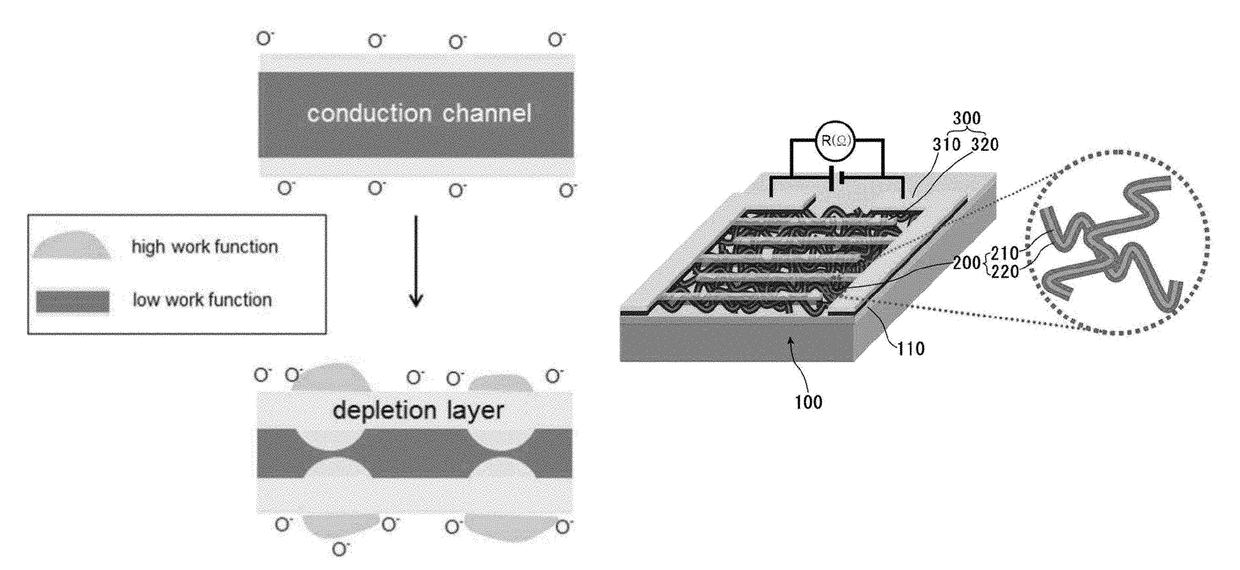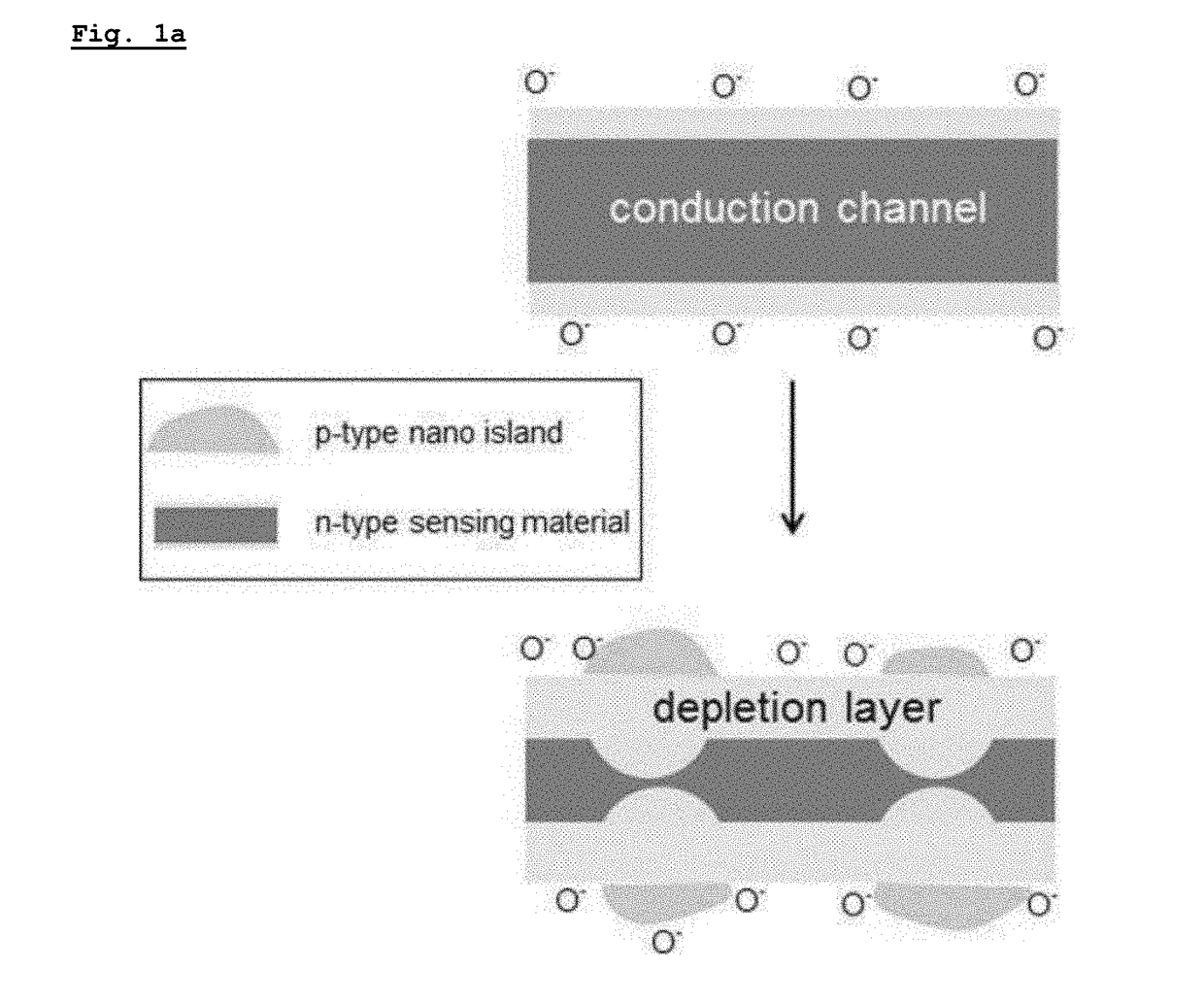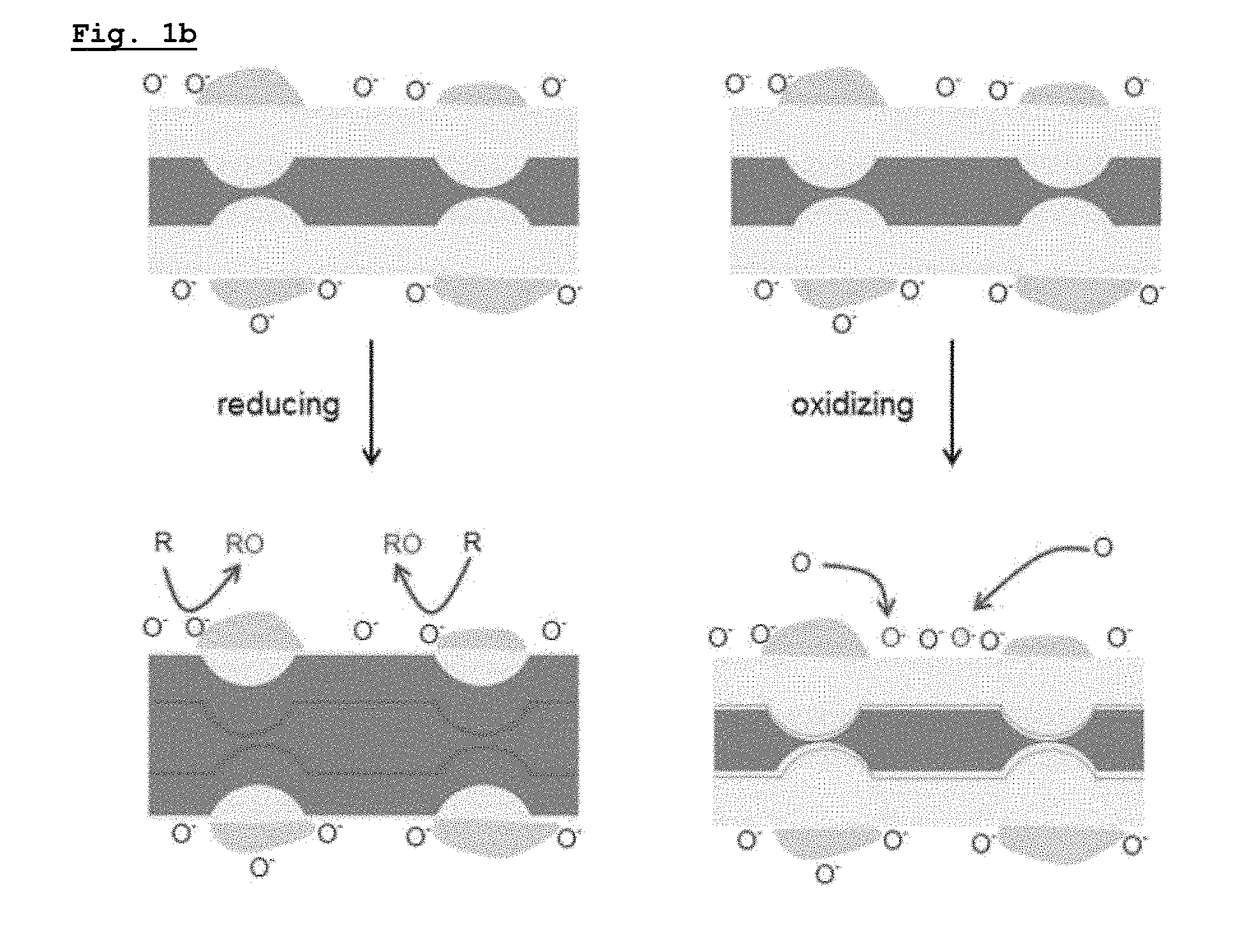Method for producing a sensor including a core-shell nanostructure
a nano-structure, sensor technology, applied in the field of sensors, can solve the problems of insufficiently sensitive nano-chemical sensors, unstudied or reported, etc., and achieve the effect of improving the sensitivity of the sensor, reducing the cost and time taken to produce the sensor, and excellent sensitivity
- Summary
- Abstract
- Description
- Claims
- Application Information
AI Technical Summary
Benefits of technology
Problems solved by technology
Method used
Image
Examples
specific example 1
Preparing of CuO—ZnO Core-Shell Nanowire
[0309]A CuO—ZnO core-shell nanowire was prepared through a novel two-step process, and through this, a gas sensor was prepared.
[0310]First, a CuO core nanowire was synthesized by using an electrospinning method, and then, a ZnO shell layer was deposited by using an ALD method.
[0311]Polyvinyl alcohol (PVA) having a molecular weight of 80,000 and copper acetate (CH2CO2)2Cu were used as precursor compounds for synthesizing the CuO core nanowire. For electrospinning, PVA beads were dissolved in diluted water to prepare 9 weight % of a PVA solution. After the PVA solution was stirred at a temperature of 70° C. for 4 hours, the PVA solution was mixed with a copper acetate solution, and the mixed solution was further stirred at a temperature of 70° C. for 6 hours. The viscous copper acetate / PVA solution was loaded inside a glass syringe provided with a 21-gauge stainless steel needle. Nanowires were uniformly electrospun on a SiO2 wafer disposed on a...
specific example 2
Preparing of SnO2—ZnO Core-Shell Nanowire 1
[0332]A SnO2—ZnO core-shell nanowire was prepared through a novel two-step process like Specific Example 1, and through this, a gas sensor was prepared.
[0333]First, a SnO2 core nanowire was synthesized by using an electrospinning method, and then, a ZnO shell layer was deposited by using an ALD method.
[0334]Polyvinyl pyrrolidone (PVP) having a molecular weight of 1,300,000 and tin chloride [SnO2.2H2O] were used as precursor compounds for synthesizing the SnO2 core nanowire. For electrospinning, 1.75 g of tin chloride was mixed with a dimethylformamide (DMF) and ethanol solvent having a volume ratio of 1:1, and the resultant mixture was stirred at a temperature of 70° C. for 30 minutes. PVD beads were dissolved in a solution containing the precursors to prepare 8 weight % of a solution, and the solution ws additionally stirred for 8 hours. The viscous tin chloride / PVA solution is loaded inside a glass syringe provided with a 21-gauge stainle...
PUM
| Property | Measurement | Unit |
|---|---|---|
| thickness | aaaaa | aaaaa |
| thickness | aaaaa | aaaaa |
| diameter | aaaaa | aaaaa |
Abstract
Description
Claims
Application Information
 Login to View More
Login to View More - R&D
- Intellectual Property
- Life Sciences
- Materials
- Tech Scout
- Unparalleled Data Quality
- Higher Quality Content
- 60% Fewer Hallucinations
Browse by: Latest US Patents, China's latest patents, Technical Efficacy Thesaurus, Application Domain, Technology Topic, Popular Technical Reports.
© 2025 PatSnap. All rights reserved.Legal|Privacy policy|Modern Slavery Act Transparency Statement|Sitemap|About US| Contact US: help@patsnap.com



